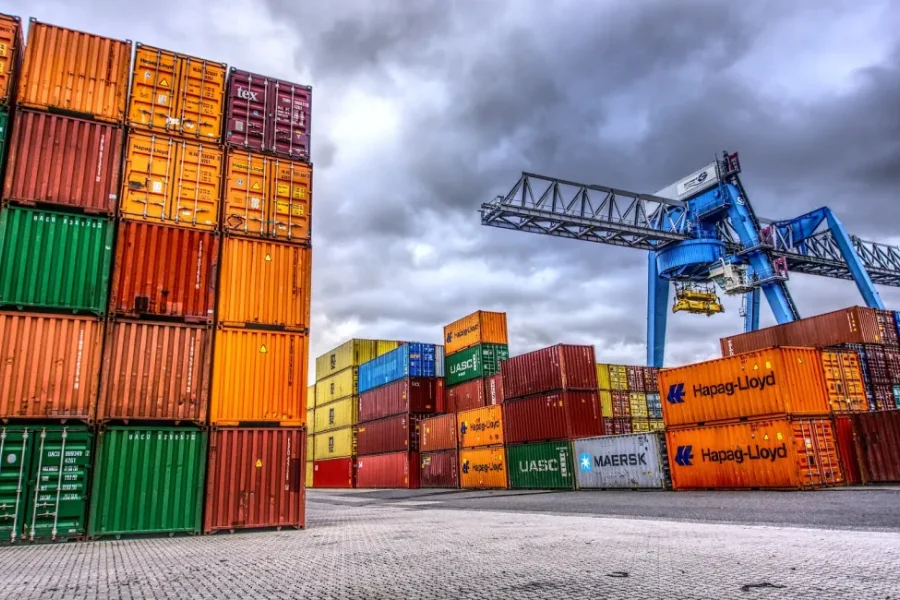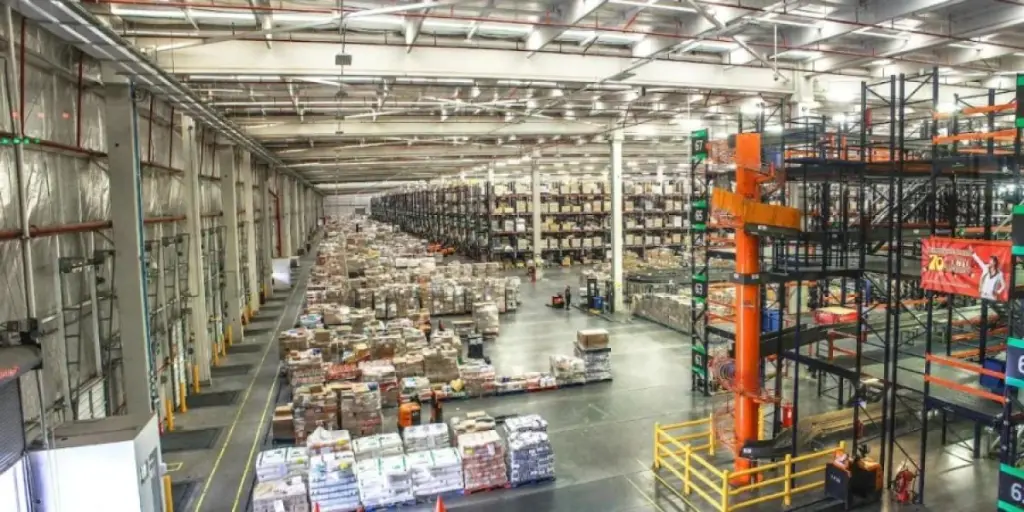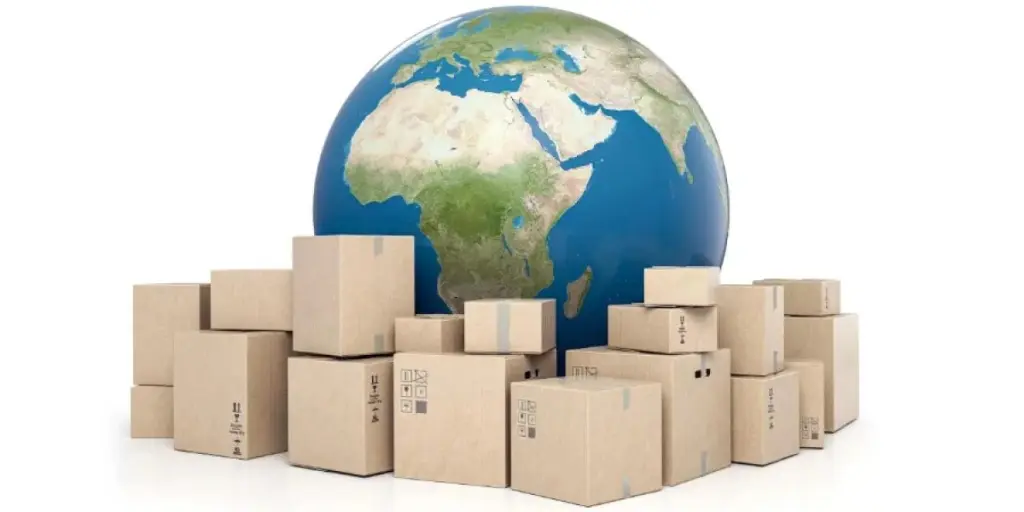No matter what one’s stance is, fulfillment costs are no doubt particularly important to any sector that hinges on streamlined logistics and prompt delivery to meet and exceed customer expectations. As such, fulfillment costs play a pivotal role in industries like e-commerce, retail, and consumer goods, especially in the United States, which has a huge market size due to the rapidly growing e-commerce industry and a highly competitive landscape.
In fact, over the past two years, the labor costs of US warehouses have reportedly risen significantly with a yearly wage growth exceeding 20%. Undoubtedly, such an increase has a significant influence on the total rise in warehousing and fulfillment costs. In the US, the effect is exceptionally evident, given the complexity of its logistics network due to its market size and geographical diversity on top of the growing labor costs. With this backdrop in mind, read on to dive into the world of US fulfillment costs and uncover types, factors, as well as strategies to calculate and minimize fulfillment costs.
Table of Contents
Overview of the fulfillment activity in the US
Types of fulfillment costs
Factors affecting fulfillment costs in the US
How to calculate fulfillment costs
Tips to reduce fulfillment costs
Closing the loop
Overview of the fulfillment activity in the US
Before we begin to delve deeper into the fulfillment details in the US, let’s first take a look at the definition of “fulfillment”. Basically, fulfillment is a part of the supply chain process to fulfill (deliver) customers’ orders from the moment they place their orders. Several integral stages in the fulfillment journey include storage, packaging, and shipment of products. A simple, direct example of fulfillment is when an online shop gets an order, arranges for the ordered item to be transferred from their warehouse (or their supplier’s), and packages it safely to send to the customer’s address.
Fulfillment in the US, on the other hand, refers to the domestic fulfillment process within the United States, which offers distinct possibilities and challenges at the same time in view of its considerable country size. A typical example of fulfillment in the US is a national retailer or online marketplace with fulfillment centers across strategic locations within the country, thereby allowing the business to efficiently fulfill their orders to customers in different states and regions.
Given the critical role that fulfillment activity plays in ensuring efficient and timely delivery of goods in the US where the booming ecommerce has led to soaring demands, it is now more important than ever for business owners to gain more insight into the fulfillment costs in the US. Understanding fulfillment costs to streamline fulfillment procedures and cutting expenses accordingly is essential for the business as these costs have a direct influence on profitability, customer satisfaction, and overall growth.
Types of fulfillment costs

The following are types of fulfillment costs that are applicable to any country since they involve some fundamental components of the fulfillment process. These standard cost elements cover the processing of orders, receipt, and maintenance of inventories, packing and labeling of items, and arrangement of delivery of goods. While the specific expenses associated with each of them may vary between countries due to differences in various factors, the types of fulfillment costs listed below are overall relevant across the fulfillment industry worldwide:
Warehousing costs
Even if one is dealing with rather small and relatively light items such as a phone case or a phone bag business, storage costs such as warehouse fees are inevitable especially when the business grows. Rental and the relevant utilities, labor, and maintenance fees are the most common costs associated with global warehouse expenses.
In the context of the US, the storage costs often include both warehouse and distribution centers costs, and come with extra considerations such as insurance, and strict building regulations. High rental charges in some popular US cities in light of the soaring real estate prices, is another distinguishing feature. For those who are importing goods into the US, however, a bonded warehouse can afford import duty planning opportunities, which can save overall costs when certain requirements are met.
Packaging costs
Whatever packaging strategies a business decides to adopt, it is a crucial component of the fulfillment process, specifically for e-commerce companies that primarily rely on packaging to elevate the unboxing experience for a long-lasting impression and brand image.
While these costs can vary depending on designs, material, and preferred quality under the worldwide context, in the US, however, some products may have to abide by specific packaging requirements due to US regulations, especially the environmental regulations to meet certain sustainability standards, which often inexorably affects the costs.
Shipping costs
With the popularity of fast and/or free shipping among the consumers, the importance of shipping costs in the fulfillment process goes without saying. On a worldwide front, the growing prevalence of ecommerce has further heightened the significance of shipping costs as a critical and irreplaceable component of overall fulfillment costs.
Globally, shipping costs can be influenced by the quality and availability of transportation infrastructure, as well as import/export fees and customs duties. Shipping costs within the US, in the meantime, are generally more stable due to the country’s well-developed transportation infrastructure and robust logistics systems. Thankfully, with the emergence of new digital platforms such as digital freight marketplace, worldwide shipping costs can now be more transparent and controllable for those who learn to tap into its potential.
Labor costs
Similar to any other industries, labor costs for the fulfillment process involve the salaries, benefits, and training expenses for employees. And apart from the transportation costs, labor costs were well-recognized as one of the top three costs that drove the overall supply chain inflation, which spans inventory management, orders handling, and customer service.
Depending on the minimum wage laws, labor regulations, and workforce availability, labor costs across the world can vary significantly between countries and regions. In the United States, for example, labor costs are highly subjected to federal and state minimum wage laws, as well as regulations related to employee benefits, overtime pay, and workplace safety.
Technology and software costs
Gone are the days when the fulfillment process relied heavily on manual human work and physical paperwork with orders received through traditional channels such as phone, mail, or fax. Today, with advanced technology and automated processes, those labor-intensive processes are thankfully replaced by systematic, fully trackable software and web applications now.
Both in the global context and the US context, technology and software help to improve efficiency, reduce human errors such as incorrect order fulfillment or shipping delays. Technology and software have become indispensable components of the fulfillment industry. It is therefore wise for any businesses that carry out the fulfillment process to allocate a regular budget for technology and software development from time to time to improve and streamline the overall fulfillment operations.
Factors affecting fulfillment costs in the US
While there may be a multitude of factors affecting the worldwide fulfillment costs, except for different customs duties and taxes, regulatory compliance requirements, local infrastructure and logistics issues as well as currency exchange fluctuations, the following three factors shape the costs of fulfillment irrespective of geographical locations, including the US. It is therefore important for businesses to assess the impact of these factors to develop more cost effective fulfillment strategies and maintain a competitive edge in the market.
Business size and volume
As one may imagine, the larger the size of a business, the more complex its fulfillment needs can be in accordance with the higher volume of orders it processes. Consequently, these larger businesses may require more automation solutions, relying more heavily on advanced technology and software to effectively manage their operations.
The upside for such sizable businesses is that they can normally negotiate better shipping rates and arrangements, with attractive discounts offered by the carriers in consideration of their high volume of shipments. At the same time, this also means that smaller businesses, in contrast, may face more challenges in securing competitive shipping rates due to their simpler fulfillment processes and lower shipment requirements.
Product size and weight
Product size and weight influence shipping and handling costs in a linear manner. The heavier or larger the items are, the higher the shipping fees too. These create a direct impact on the fulfillment costs and profitability of a company.
The fact that larger and heavier items are typically subject to specialized packaging, equipment, or specialized handling procedures for a safe and smooth transportation process further adds to the strain of high fulfillment costs. It is therefore imperative for companies dealing with products of varying sizes and weights to adapt their fulfillment processes and strategies accordingly for more effective and flexible cost management.
Shipping distance and seasonal fluctuations
Understandably, longer shipping distances or any shipments to remote or hard-to-reach areas often result in additional fees and issues, such as limited carrier options or increased transit times. Accordingly, it is advisable for the businesses to factor in these distance dependence and location-centric considerations when planning their fulfillment strategies. For example, companies may strategically locate their warehouses or distribution centers to optimize shipping distances and reduce costs.
On top of long shipping distances, seasonal fluctuations often rub salt into the wounds of the already high shipment costs. The surge in demand during peak seasons such as the holiday season leads to increased order volumes and thereby heightening the pressure on fulfillment costs. Additional labor, warehouse space, and inventory management are hence required to accommodate the increased workload. Companies must therefore also plan and be prepared for seasonal fluctuations to ensure they can meet customer expectations and maintain efficient operations during peak periods.
Unique factors in the US
Besides the aforementioned major fulfillment costing factors, a few additional factors that are specifically applicable to the fulfillment costs in the US include the complexity of the US sales tax system, which has different rates and regulations in each state. Meanwhile, regional variance is another element that the companies must take into account for changes in various price components across different areas, in keeping with the large and diversified geography of the US. Finally, the competitive fulfillment service environment is also a relatively distinctive element in the US fulfillment sector. Powerful companies in the market, such as Amazon, UPS, and FedEx, are vying for clients with a variety of competitive fulfillment services.
How to calculate fulfillment costs

Calculating fulfillment costs can be a complex process, as it involves taking into account the overall fulfillment operation, various factors, and expenses related to the entire fulfillment process. A simple and direct approach to fulfillment costs calculation is to add up the following costs:
- Warehousing costs: Determine the total cost of warehousing, which should cover the rental or mortgage fees, utilities, security, and maintenance costs. To calculate the warehousing cost per order, use the following formula: (Total warehouse costs / Number of orders fulfilled).
- Packaging costs: Sum up the total cost of packaging fees including the design charges, materials, boxes, tape, labels, etc. related packaging costs while taking into consideration any bulk discounts or better rates provided by the suppliers. To have an idea about the packaging cost per order, check out this formula: (Total packaging material costs / Number of orders fulfilled)
- Labor costs: To get an idea of the labor costs, the sum of wages, benefits, and payroll taxes for all employees involved in the fulfillment steps can be added. Use this formula to determine the labor cost per order: (Total labor costs / Number of orders fulfilled)
- Shipping costs: Figure out the most suitable shipping provider by considering factors such as location, distance, and service level required. In terms of shipping costs calculation formula, simply make full use of any rate calculators provided by carriers such as USPS, UPS, or FedEx to get a shipping cost estimation according to the relevant package weight, dimensions, and destination details.
- Technology and software costs: Calculate the total cost of technology and software used in the fulfillment process, such as warehouse management systems, inventory tracking, and shipping software. Take note of any monthly or annual licensing fees per additional user for annual cost increment. The formula to obtain the technology and software cost per order is: (Total technology and software costs / Number of orders fulfilled)
- Additional fees and expenses: Remember to factor in other additional fees and expenses, such as taxes, or regulatory compliance costs (wherever applicable). The formula to obtain these additional costs per order is: (Total additional costs/ Number of orders fulfilled)
Based on the list of costing components above, the total fulfillment cost per order is therefore= Warehousing cost per order + Labor cost per order + Packaging cost per order + Shipping cost per order + Technology and software cost per order + Other additional costs per order.
Multiply the total per-order costs obtained above by the total number of orders fulfilled to get an idea about the overall fulfillment costs for your business.
In any case, it is worth noting that the calculation method provided above serves as a general guideline only and shall be adjusted or customized to the specific needs and circumstances of different businesses. The good news is, there are also some fulfillment calculators available online for anyone to fill out the relevant required data to obtain a grasp on the potential fulfillment costs involved online.
Tips to reduce fulfillment costs
Streamlining operations
Streamlining operations essentially comes down to one word- planning. With proper planning that prioritizes optimization processes for inventory management, order processing, and shipping, the entire fulfillment process can then be highly streamlined and consequently mitigate any potential issues to improve overall efficiency.
That is why logistics planning makes up an essential portion throughout the fulfillment process as it involves organizing and managing the transportation, storage, and flow of goods from the point of origin to the point of consumption. The ultimate goal is simply to make sure that the products are stored, packed, shipped, and delivered to customers on time.
Outsourcing fulfillment
While oftentimes outsourcing a task may imply losing control over a certain crucial process, outsourcing fulfillment to a third-party logistics (3PL) provider in the US have some clear advantages to many businesses, especially the ecommerce sellers who often need to allocate more of their time in marketing, branding, product sourcing, and supplies.
Choosing the right 3PL partner can hence allow the ecommerce provider to take full advantage of economies of scale, yet gain access to advanced, real-time technology, and instant labor assistance, thereby achieving cost savings and ensuring smooth operations.
Incorporating technology and automation
Investing in live automation technology such as warehouse management systems, automated packaging solutions, and advanced logistics software not only can greatly streamline the fulfillment processes but provide instant cost reduction via much more simplified, direct and easily trackable up-to-the-minute software applications.
Negotiating with carriers and suppliers
Last but certainly not least, negotiating with carriers and suppliers can lead to better pricing and terms for any businesses wishing to reduce their fulfillment costs. By building strong relationships and leveraging their buying power, companies can secure more favorable rates and reduce their fulfillment costs.
Closing the loop
An in-depth understanding of the fulfillment costs in the US is specifically important to any ecommerce business since the US possesses one of the biggest, highly developed markets for ecommerce. Warehousing costs, shipping costs, packaging costs, labor costs as well as technology and software costs are the top types of fulfillment costs in the US. Some major factors that can affect the overall fulfillment costs in the US include the size and volume of a business, its product dimensions, the distance and location of shipments, and seasonal fluctuations in order numbers. The complex sales tax system, regional variances as well as competitive fulfillment service industry, meanwhile, are some unique examples of the factors that are influencing the fulfillment costs in the US.
Fulfillment costs can be calculated using certain formulas while taking all major types of fulfillment costs and any additional fees into consideration. Practicing some tips such as getting operations streamlined, 3PL fulfillment outsourcing, negotiating with carriers and suppliers, and technology and automation incorporation can help to reduce the overall fulfillment costs. Gain more insights on logistics terms, wholesale business advice, and ideas by checking out the articles available on Alibaba Reads regularly.

Looking for a logistics solution with competitive pricing, full visibility, and readily accessible customer support? Check out the Alibaba.com Logistics Marketplace today.



